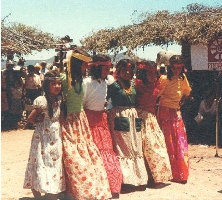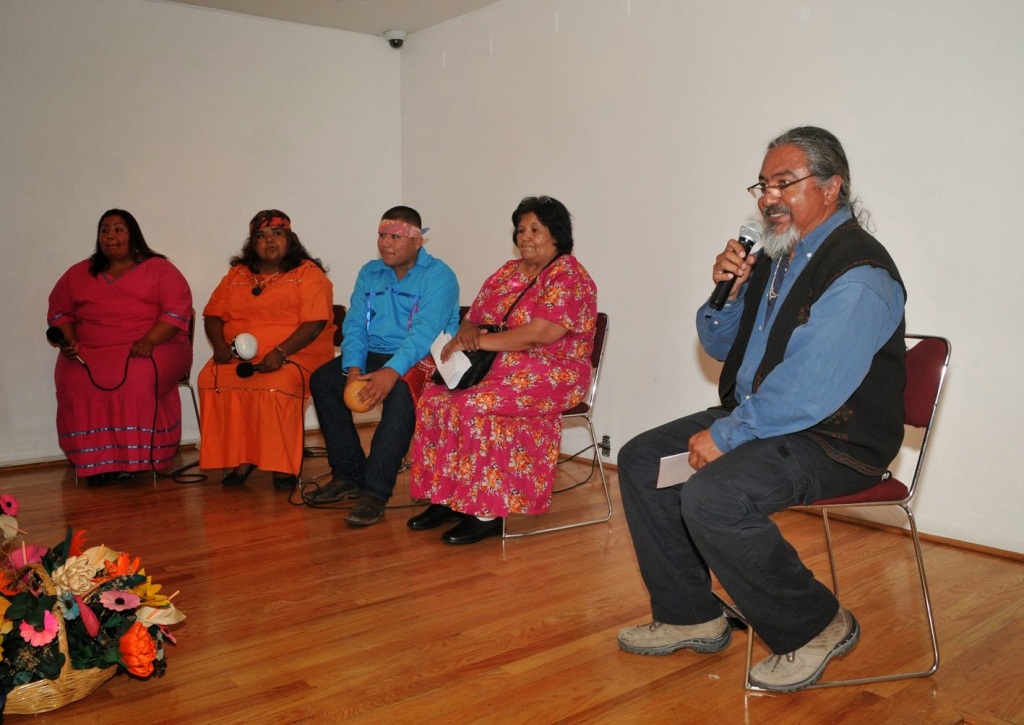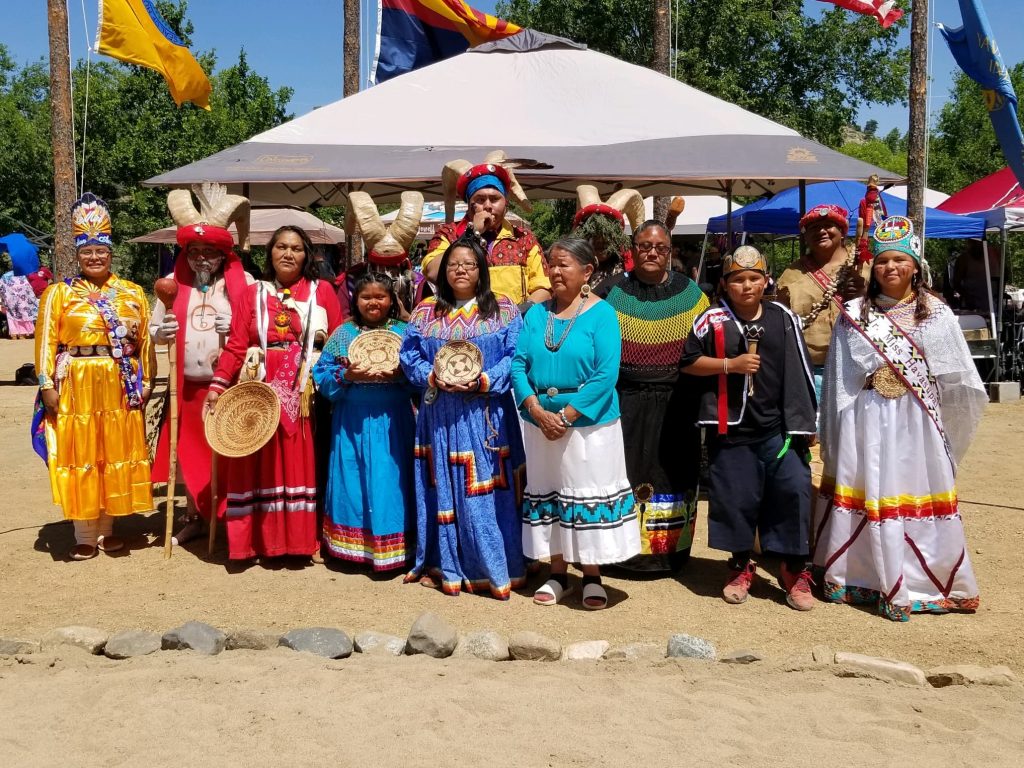The Paipai (Pai pai, Pa’ipai, Akwa’ala, Yakakwal) are an indigenous people of Mexico living in northern Baja California. Their traditional territory lies between the Kiliwa on the south and the Kumeyaay and Cocopa on the north, and extending from San Vicente near the Pacific coast nearly to the Colorado River‘s delta in the east. Today they are concentrated primarily at the multi-ethnic community of Santa Catarina in Baja California’s Sierra de Juárez. Meigs suggested that the aboriginal populations associated with San Vicente and Santa Catarina missions were respectively 780 and 1,000 individuals. Hicks estimated 1,800 for the aboriginal population of the Paipai, or a density of 0.3 persons per square kilometer. Owen argued that these estimates were substantially too high. However some studies show that there are less than 200 speakers of the Paipai language left, because the new generations do not find it necessary to learn the Paipai language.
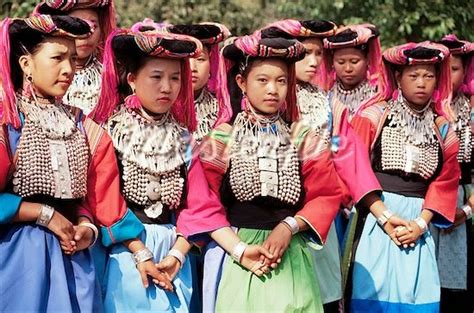
The Paipai (Pai pai, Pa’ipai, Akwa’ala, Yakakwal) are an indigenous people of Mexico living in northern Baja California. Their traditional territory lies between the Kiliwa on the south and the Kumeyaay and Cocopa on the north, and extending from San Vicente near the Pacific coast nearly to the Colorado River’s delta in the east. Today they are concentrated primarily at the multi-ethnic community of Santa Catarina in Baja California’s Sierra de Juárez. Somewhere between the Kiliwa, Kumeyaay, and Cocopa in northern Baja, California, are the Paipai. The Paipai first encountered Europeans when Sebastián Vizcaíno‘s expedition mapped the northwest coast of Baja California in 1602. Paipai focused more on hunting and gathering than agriculture, as was the case for many indigenous tribes in this area. The main Paipai settlement is located in Santa Catarina, a community that is also shared by the Kumeyaay and Kiliwa. Unfortunately, the Paipai language has all but faded.

The Pai-Pai live in Santa Catarina, whose indigenous name is Xac-Tojol. It was founded by Dominican missionaries in 1797 and destroyed in 1840. In 1974, the Pai-pai were awarded 2,817 hectares of hilly land for collective exploitation. There are small arable areas in this area, although without water, since only a storm stream passes through the community. The main modern settlement of the P ai-pai is in Santa Catarina , a community they share with the Kumeyaay and Kiliwa residents. The Pai-pai first encountered Europeans when Sebastian Vizcaino’s expedition encountered the coast of Baja California in 1602. The most intensive contacts began in 1769 when the expedition to establish settlements in California, led by Gaspar de Portola y Junipero Serr passed through the western portions. The Dominican mission of San Vicente was founded near the Pai-pai coast in 1780. It became a Spanish center of administration and military control of the region. In 1797 San Vicente was supplemented with a mission inland from Santa Catarina , near the border between the Paipai and Kumeyaay territories. The Santa Catarina mission was destroyed in 1840 by indigenous forces, including the Pai-pai.

The Pai’s- are a people from Arizona, California and Mexico. Yes, MEXICO-!! the pai pai people who reside in Baja, Mexico. Since 1999, every August the Pai Pai’s host an annual event in Mexico. They speak the yuman language. It can be considered a first language like the Havasupai and elder Hualapai people. Once upon a time -Yavapai, Mojave, Hualapai, Pai Pai, Havasupai, Cocopah, Quechan, kum’yay and Tribes as far as the west coast California and Pima were one people – Yuman. Prescott Arizona, as the month of June is coming to an end. The Annual Pai(People) Gathering, event. Hosted by each Pai tribe on their respected reservation lands. Was hosted in Prescott, by the Prescott Yavapai Tribe- Yavapai-Apache, Havasupai, Hualapai, Yavapai Fort McDowell and Yavapai Prescott.
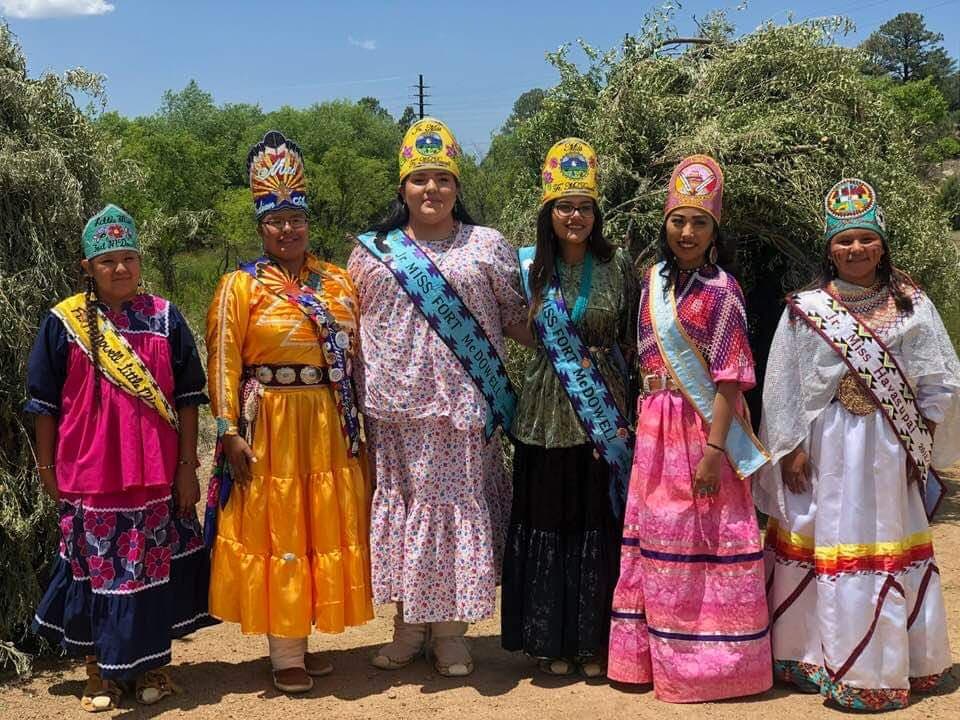
Paipai is a Yuman language spoken in the municipality of Ensenada in the centre of Baja California state in northern Mexico. According to the 2010 census, about 200 people speak Paipai, which is also known as Jaspuy Pai. Paipai has been documented by Judith Joël and Mauricio J. Mixco, who have written about the syntax, grammar and morphology of the language. The Paipai language is part of the larger Yuman language family. It is spoken by the Paipai people who are indigenous to northern Baja California, Mexico. The Paipai community is related to the Yavapai, Kiliwa, and Kumeyaay ethnicities. There are approximately 200 Papai speakers since most of them have settled in Kumeyaay villages. Judith Joël has published texts in Paipai language. Mauricio J. Mixco has also written transcriptions of stories. Linguistically, the Paipai language is related to the Upland Yuman language whose dialects are spoken by the Walapai, Yavapai, and Havasupai ethnicities in western Arizona.
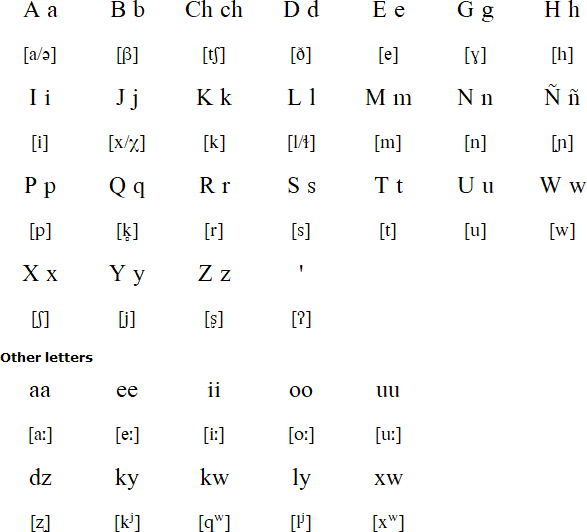
Paipai Vocabulary
Our list of vocabulary words in the Paipai language,
with comparison to words in other Hokan languages.
Kuriut’ Trab Pai Pai
An untranslated Paipai text.
Paipai
Demographic information about Paipai
from the Ethnologue of Languages.
Paipai Language Tree
Theories about Paipai’s language relationships
compiled by Linguist List.

The Origin of Jealousy
Video of an indigenous folktale
told in the Pai Pai language.
Notes on the Akwa’ala Indians of Lower California
Anthropological article from 1928, with linguistic
and religious information and several legends.
Paipai (Pajaspuypayem)
Short article on the Paipai tribe.
Endangered Languages Project: Paipai
Bibliography of Paipai language resources.
Lengua Paipai
Akwa’ala
Paipai information in Spanish
and other languages.

Perhaps the least-known indigenous region of Mexico is that of Northern Baja California. Here vestiges of once large populations live in the mountain range of the Sierra Juarez and the Sierra San Pedro Martir and along the northern Gulf of California coast on the Colorado River Delta. Today California coast on the Colorado River Delta. Today a total of some 500 indigenous inhabitants of the Kiliwa, Cochimi, Kumiai, Cucapa, and Paipai groups live in this northern range, which stretches some 200 miles south of the US-Mexico border, between the urban metropolises of Tijuana and Mexicali. These people are the last indigenous survivors in the Baja California Peninsula of Mexico, where once 25,000-50,000 native peoples lived before the arrival of missionaries and explorers. These peoples, like other Mexican indigenous groups, are facing the slow erosion of their native territories because of the “occupation” of land by Mexican ejidos. Ironically, the Reforma Agraria (National Land Reform Program, or Agrarian Reform), established in the aftermath of the Mexican Revolution of 1911 to guarantee the rights of the Mexican campesino to land, is the vehicle being used to usurp indigenous lands. The native peoples of Baja California are now relocated onto significantly reduced areas; one group, the Paipai of Jamau, has been removed completely from its ancestral lands.

South of the border, the Paipai are similarly working to maintain Native languages – there are several spoken in Santa Catarina today, including Paipai and Ko’alh. Paipai artisans are also renowned for their pottery, as Santa Catarina is the only Native Californian community with an unbroken ceramic tradition stretching from precontact times to the present. The potters, nearly all of whom are women, and other Paipai artisans are in high demand at workshops and cultural events throughout northern Baja California and southern California. In fact, many Native artisans from Baja California regularly connect with tribal communities in the United States. In the late nineteenth and early twentieth centuries, Paipai communities opened their doors to other Native people seeking refuge from violence and exploitation. These changes look dramatic when one compares the situation in 2020 to that in, say, 1780. But when you view it from the perspective of lived experience, the overall picture is one of individuals and families striving for community continuity.

